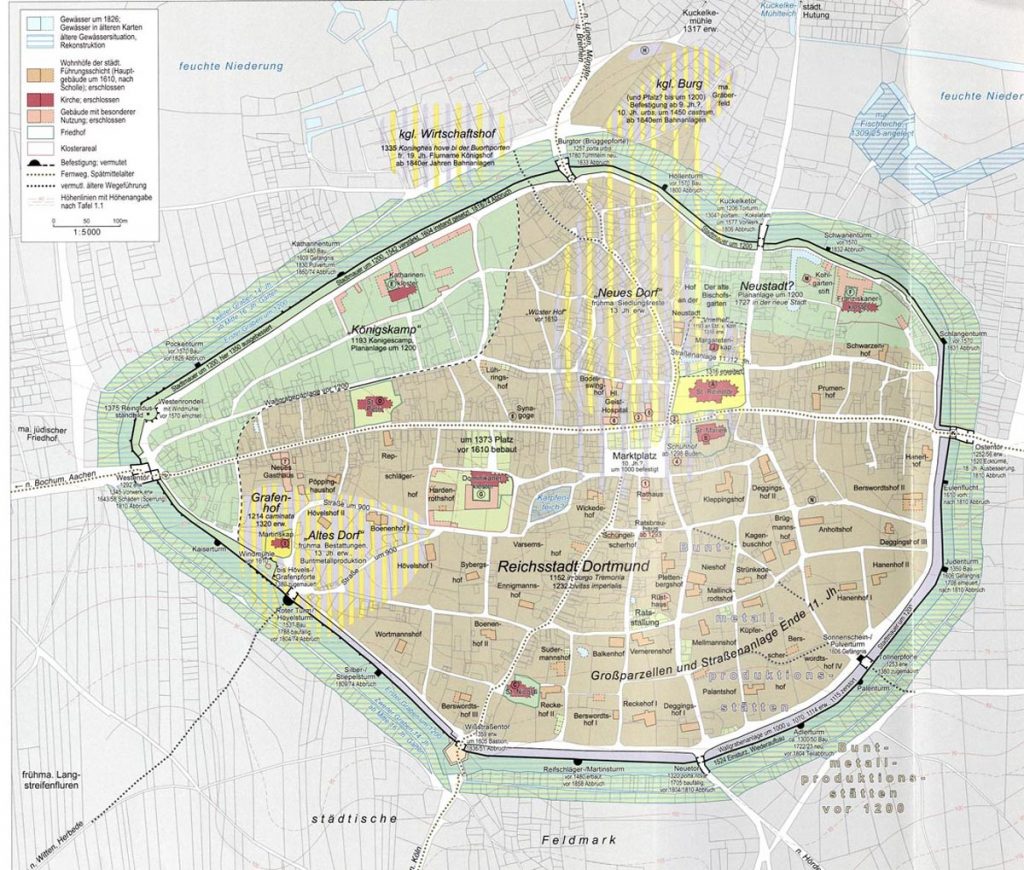The former Jews’ Tower on the city wall
The fortifications of the city created after 1200 consisted of a wall with gates, and towers. One of the towers on the eastern stretch of the wall was erected in 1350 and came to be called the “Judenturm”, or “Jews’ Tower“, as its construction was funded with revenues obtained from the sale of property left behind by the Jews who were driven out of the city in the wake of the plague. In the early 17th century, the Jews’ Tower was also used by the city as a gaol. It was demolished in 1810.
In the class-based Christian society of mediaeval times, the Jews found themselves in the role of economic and social outsiders. As non-Christians, they were not allowed to purchase land, and also in the towns and cities, their means of earning a living were severely limited, since membership of craft guilds and fraternities, for example, was closed to them.
The Jews therefore had no alternative but to engage in professions that were repugnant to many, or were even barred to Christians. Consequently, they earned their living as money lenders, pawnbrokers, rummage dealers or pedlars, for example. The Jewish families of Dortmund named in the medieval sources lived almost exclusively from money dealing and the related pawnbroking business.
For the emperor, the local lords and the princes of the church, the taxes and levies the Jews were required to pay in return for protection of their life and property constituted a welcome source of income. For the Jews, on the other hand, the letters of protection provided only relative, and always only temporary, security. Religion-based hostility towards the Jews, along with accusations such as the ritual murder of Christians, blasphemy and desecration of the host, regularly gave rise to regional pogroms or expulsions

